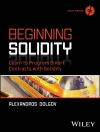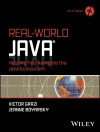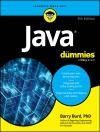Discover the capabilities of Py Spark and its application in the realm of data science. This comprehensive guide with hand-picked examples of daily use cases will walk you through the end-to-end predictive model-building cycle with the latest techniques and tricks of the trade.
Applied Data Science Using Py Spark is divided unto six sections which walk you through the book. In section 1, you start with the basics of Py Spark focusing on data manipulation. We make you comfortable with the language and then build upon it to introduce you to the mathematical functions available off the shelf. In section 2, you will dive into the art of variable selection where we demonstrate various selection techniques available in Py Spark. In section 3, we take you on a journey through machine learning algorithms, implementations, and fine-tuning techniques. We will also talk about different validation metrics and how to use them for picking the best models. Sections 4 and 5 go through machine learning pipelines and various methods available to operationalize the model and serve it through Docker/an API. In the final section, you will cover reusable objects for easy experimentation and learn some tricks that can help you optimize your programs and machine learning pipelines.
By the end of this book, you will have seen the flexibility and advantages of Py Spark in data science applications. This book is recommended to those who want to unleash the power of parallel computing by simultaneously working with big datasets.
What You Will Learn
- Build an end-to-end predictive model
- Implement multiple variable selection techniques
- Operationalize models
- Master multiple algorithms and implementations
Who This Book is For
Data scientists and machine learning and deep learning engineers who want to learn and use Py Spark for real-time analysis of streamingdata.Tabella dei contenuti
Chapter 1: Setting up the Pyspark Environment .- Chapter 2: Basic Statistics and Visualizations.- Chapter 3: :Variable Selection.- Chapter 4: Introduction to different supervised machine algorithms, implementations & Fine-tuning techniques.- Chapter 5: Model Validation and selecting the best model.- Chapter 6: Unsupervised and recommendation algorithms.- Chapter 7:End to end modeling pipelines.- Chapter 8: Productionalizing a machine learning model.- Chapter 9: Experimentations.- Chapter 10:Other Tips: Optional.
Circa l’autore
Ramcharan Kakarla is currently lead data scientist at Comcast residing in Philadelphia. He is a passionate data science and artificial intelligence advocate with five+ years of experience. He holds a master’s degree from Oklahoma State University with specialization in data mining. Prior to OSU, he received his bachelor’s in electrical and electronics engineering from Sastra University in India. He was born and raised in the coastal town of Kakinada, India. He started his career working as a performance engineer with several Fortune 500 clients including State Farm and British Airways. In his current role he is focused on building data science solutions and frameworks leveraging big data. He has published several papers and posters in the field of predictive analytics. He served as SAS Global Ambassador for the year 2015.
Sundar Krishnan is passionate about artificial intelligence and data science with more than five years of industrial experience. He has tremendous experience in building and deploying customer analytics models and designing machine learning workflow automation. Currently, he is associated with Comcast as a lead data scientist. Sundar was born and raised in Tamil Nadu, India and has a bachelor’s degree from Government College of Technology, Coimbatore. He completed his master’s at Oklahoma State University, Stillwater. In his spare time, he blogs about his data science works on Medium.












